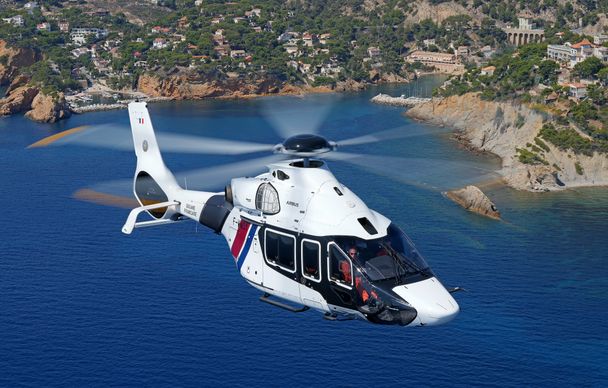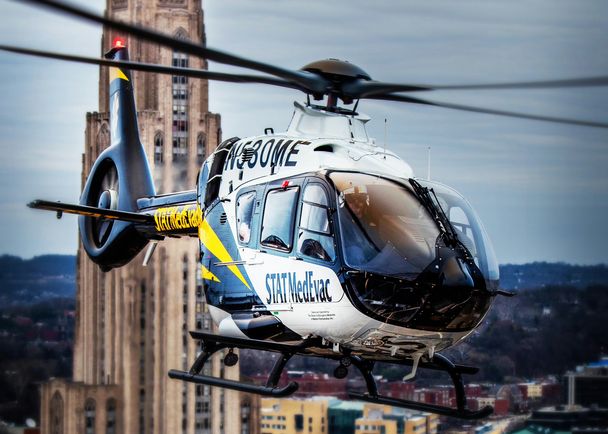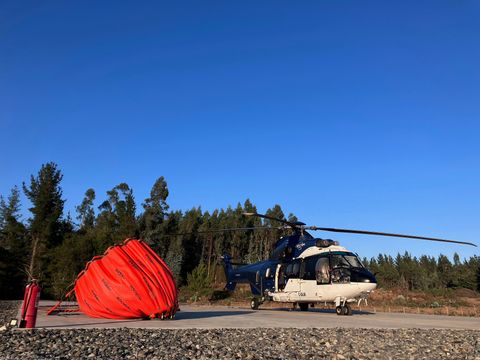Keeping it down while up in the sky

In order to gain certification, helicopters cannot emit more than a certain level of noise, but at Airbus Helicopters work continues to reduce the sound levels of its in-service fleet. Despite already emitting significantly less noise than competing helicopters, Acoustic Expert Julien Caillet delves into the research aiming to reduce Airbus’ helicopters’ sound levels even further.
Compared to other helicopters, Airbus’ range already has a clear advantage in terms of noise emissions. Why is that?
Julien Caillet: Innovation and continuous development is at the heart of what Airbus does. Thanks to these values, our products benefit from several technologies which limit noise, such as the Fenestron, the shrouded tail rotor with its modulated blade distribution. We have innovative blade shapes which are designed to reduce noise, for example the H160, but also the H135 and H145. The noise emissions of every helicopter is publicly available and Airbus’ helicopters have a clear advantage and we will continue to study various possibilities to improve things even further.
What is behind Airbus Helicopters’ motivation to reduce the noise footprint even further?
Julien Caillet: It’s about supporting our customers, to make sure that they’re recognised as good neighbours in the communities that they’re flying in. While helicopters are often performing essential operations, they’re often flying much closer to the population than fixed-wing aircraft are. For emergency medical services missions, they could be hovering above a city, or taking-off and landing much nearer to the general public. They could also be operating in natural environments, or close to nature and wildlife. We want to support our operators by doing everything we can to ensure their noise emissions are minimal, so they are less likely to be impacted by complaints, regulations or local restrictions.

What are the key areas of focus?
Julien Caillet: Obviously one area of focus is technological innovation and of course, the technobricks we conceive will have an impact on reducing the sound footprint. However we have also directed specific research into studying the effects of how a helicopter can be specifically flown, in order to minimise the noise it emits. We have developed some tools and some experimental databases on our products to really understand all the noise that is emitted and propagated to the ground, as well as the effects of various flight conditions. The effect of speed, the effect of glide slopes, meaning climb or descent angles, the effect of turns, of all non-stationary manoeuvres. We are modelling this information so that we can predict the best operating conditions in order to reduce the noise on the ground.
It allows us to make or produce noise maps of the operation of our helicopters, providing a deep understanding of the level of noise we are producing in particular areas around the helicopter. This is really quite important because noise is not something which is visible or discernible for the pilots or crew. The second thing is, on top of being able to produce these kinds of environmental impact assessment maps, we have also developed tools to optimise these operations, optimising the trajectory of the helicopter - trajectory being the latitudinal and longitudinal position of the aircraft - its elevation, its altitude, but also the slopes, the speed, the acceleration and deceleration are taken into account in the noise reduction. We have also developed some advanced propagation models of the sound, to really compute quite accurately the noise, which is produced on the ground, meaning taking into account the distance to the aircraft, but also the atmospheric absorption, the reflections on the ground, even complex propagation effects such as building masking or reflections. We are also able to take into account wind effects or temperature gradient effects in these kinds of predictions.

What has been the customer feedback?
Julien Caillet: When we present this topic to an operator showing what we are now capable of doing, they are really glad to gain an understanding of the noise which they are producing on the ground, because this is not something which is visible for them, they are not really aware of it. They are also very keen on seeing that there are flight conditions which are much noisier than others. It is not obvious, for example, that helicopter approaches are much noisier than helicopter take-offs. They do not necessarily know that on some combinations of glide slopes and speed in approach phase they are particularly noisier than in other conditions. So, trying to avoid these conditions is something that is clearly an opportunity for them to reduce their noise. They are happy to try the recommendations that we are providing to them.

Are there any other projects that this research will be able to support?
Julien Caillet: So, we are also actively participating in some projects to try to understand what the acceptability of noise is, to better define our next product or our next technology so that they will match these requirements. Sound levels will be important concerning the acceptance for Urban Air Mobility, like the CityAirbus NextGen aircraft. eVTOLs will fly above cities and if not properly designed could be noisy for the population, not to mention that they will also likely fly very close to the general public in crowded areas. Helicopters represent a good means to anticipate and influence the design before our eVTOL prototype takes to the skies and this research would also of course still benefit our current in-service helicopter fleet.



